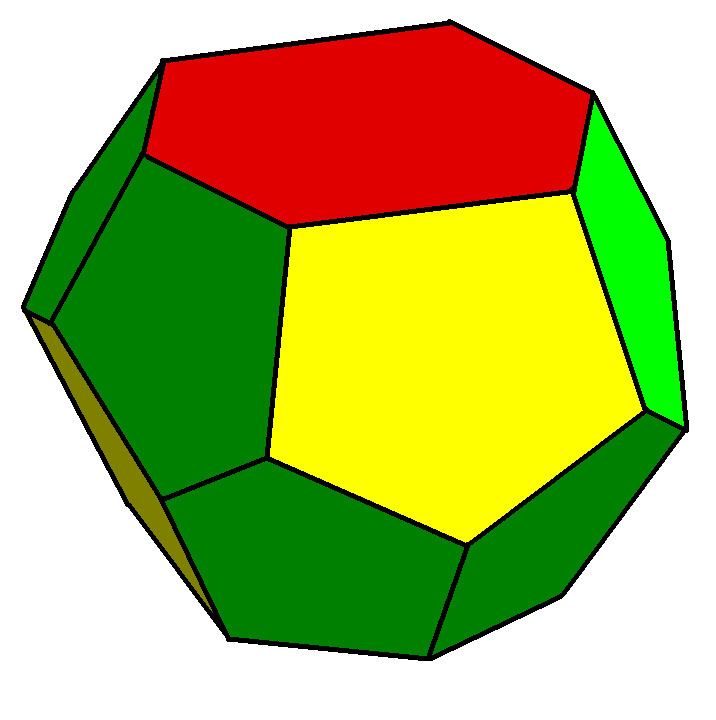 | ||
A tetradecahedron is a polyhedron with 14 faces. There are numerous topologically distinct forms of a tetradecahedron, with many constructible entirely with regular polygon faces.
Contents
A tetradecahedron is sometimes called a tetrakaidecahedron. No difference in meaning is ascribed. The Greek word kai means 'and'. There is evidence that mammalian epidermis cells are shaped like flattened tetrakaidecahedra, an idea first suggested by Lord Kelvin.
Convex
There are 1,496,225,352 topologically distinct convex tetradecahedra, excluding mirror images, having at least 9 vertices. (Two polyhedra are "topologically distinct" if they have intrinsically different arrangements of faces and vertices, such that it is impossible to distort one into the other simply by changing the lengths of edges or the angles between edges or faces.)
Examples
An incomplete list of forms includes:
Tetradecahedra having all regular polygonal faces (all exist in irregular-faced forms as well):
Tetradecahedra having at least one irregular face:
Includes an optimal space-filling shape in foams (see Weaire–Phelan structure) and in the crystal structure of Clathrate hydrate (see illustration, next to label 51262)
